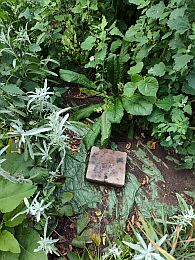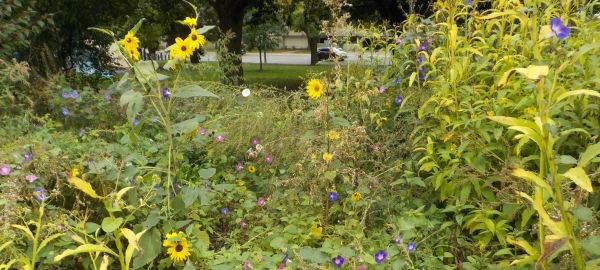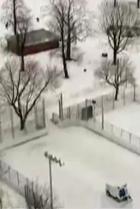
Centre For Local Research into Public Space (CELOS)
Plant invaders (mostly good ones) at Dufferin Grove Park
A lot of things have altered at the park over the past five years, but the community-led gardens, first started in 1994, have continued and even thrived. (Community garden co-op coordinator Skylar Hill-Jackson got a CELOS public space award in 2022, for her long and active stewarding of the park gardens, and her work alongside the other gardeners.)

black raspberries
There are flower-and-vegetable beds, herb beds, tree nurseries, pollinator and native species plantings, little forests (started as saplings, growing fast), berry gardens (red and black currants, black raspberries, gooseberries, serviceberries, elderberries, cherries, grapes) -- plus two Indigenous medicine beds and – as of this month – a newly developing children’s teaching garden beside the rink building. (Thanks, Jessica Shepherd)
And -- thriving in those garden areas that are off-limits to the mowers -- there are many wild plants that came on their own. I mean those plants that are usually called weeds, invasives, “non-native” plants and sometimes “noxious weeds.” During the three years when the construction fences were up around the rink, the park’s un-mowed areas temporarily got bigger, and more wild plants (and escaped garden perennials) sprang up, spreading their seeds around to the other park gardens at the end of each season.

tobacco, silver sage, lamb's quarters, green tarp
The two Indigenous garden beds north of the field house, mostly untended, are now a fascinating tangle of the Indigenous medicine plantings from the summer of 2021 and edible/medicinal wild “volunteers” that joined in year by year. In 2024 a little group sponsored by the TDSB cleared out the tangle of plants at those two garden beds and covered the beds with tarps. But when the group didn’t come back this year, the mix of seeds in the ground, from before, sprouted underneath and grew right through the tarps. That’s nature!
Over the past few weeks I’ve filled in some of the gaps in my reporting on the park gardens (on the “park gardens” part of the dufferinpark.ca website).
The cover page of the park gardens section is here.
The Indigenous gardens story (2021 to the present) is here.
A “sample year” (2024) is here, showing in more detail what kind of work, with both joy and frustration, goes into keeping community-led gardens in a city park.
But the kicker, for me, is how many of the wild plants growing in the park are also pollinators, edible and/or medicinal. Some have been growing on this continent forever, and others were brought in hundreds of years ago by settlers -- but many of them soon recognized as useful by Indigenous and Metis people. Have a look at the “wild plants” page here. I hope some of you have additions for me to post.
Maybe it would be good to add a recipes section too? -- starting with soups and frittatas and pizza that can be made with the park’s spring greens like nettles, lamb's quarters, shepherd's purse, plantain, and many more. Very nutritious, very delicious, very traditional and – happily – growing in a city where parks, by policy, are not sprayed with herbicides. Lucky Toronto.

self-seeded wild plants behind the rink construction fence, 2021



 Show search options
Show search options




 You are on the [Blog 3 August 2025 Plant Invadersr] page of folder [Research Library ]
You are on the [Blog 3 August 2025 Plant Invadersr] page of folder [Research Library ] For the cover page of this folder go to the
For the cover page of this folder go to the